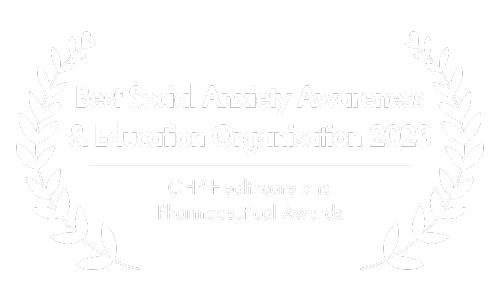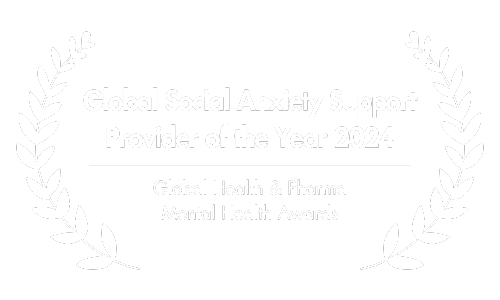Potent Partners: A Practical Guide to RIMA Treatment for Social Anxiety
This article features a suggestion for an online psychiatry service, where certified mental health experts can assess social anxiety, offer diagnoses, and prescribe medications if appropriate. By using this link, you may receive a significant discount on the service, and we will earn a commission.
Social anxiety, also known as social phobia, goes beyond the typical nervousness experienced in social situations, often causing intense fear and apprehension when facing social interactions.
People with social anxiety may avoid gatherings, conversations, or public speaking due to the distress these situations trigger.

Over time, this avoidance can lead to isolation, hinder personal and professional growth, and negatively affect overall well-being.
Addressing social anxiety involves a multi-faceted approach, which often includes psychotherapy, lifestyle adjustments, and sometimes, medication.
While psychotherapy helps individuals develop coping strategies and change thought patterns, medication can play a crucial role in managing the physiological aspects of anxiety.
In the realm of medication options, there’s a lesser-known but effective class of antidepressants known as Reversible Inhibitors of Monoamine Oxidase A (RIMAs).

These medications deserve attention for their potential effectiveness in alleviating the distressing symptoms of social anxiety.
RIMAs, as a unique subset of antidepressants, offer a distinctive mechanism of action that sets them apart from other classes.
In this comprehensive article, we’ll delve into the world of RIMAs, exploring how they work, their efficacy, benefits, potential side effects, and the crucial steps you need to take when considering RIMAs as part of your social anxiety treatment journey.
Throughout this article, remember that seeking professional guidance is essential for making informed decisions about your treatment path.
Let’s begin.
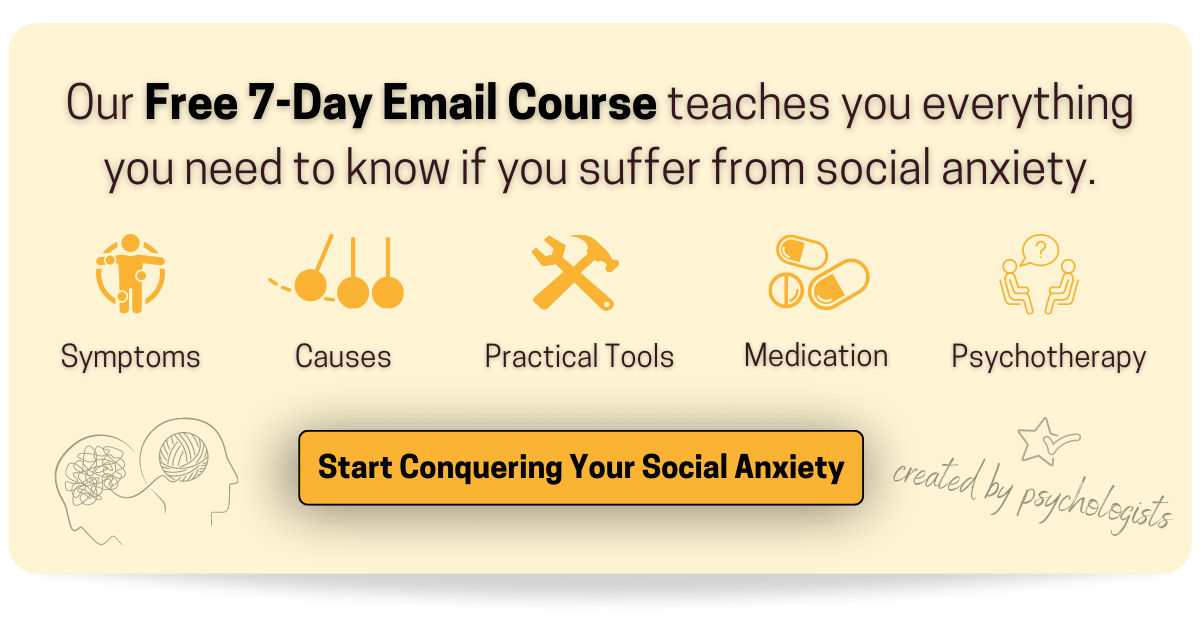
A. Understanding RIMAs: How They Work
Exploring RIMAs as a Class of Antidepressants
Reversible Inhibitors of Monoamine Oxidase A, or RIMAs, are part of the family of antidepressant medications originally developed to address mood disorders.
However, their effects extend beyond mood regulation to impact anxiety levels as well (e.g., Vries et al., 2016).
RIMAs stand out by uniquely targeting the enzyme monoamine oxidase A (MAO-A), which plays a central role in breaking down neurotransmitters such as serotonin, norepinephrine, and dopamine in the brain.
The Mechanism of Action: Inhibition of Monoamine Oxidase A
At the heart of RIMAs’ action lies their ability to inhibit the enzyme monoamine oxidase A.
By doing so, RIMAs effectively regulate the breakdown of neurotransmitters, resulting in increased levels of serotonin, norepinephrine, and dopamine in the brain (Fowler et al., 2010).

These neurotransmitters are known to play crucial roles in mood regulation, emotional well-being, and the body’s stress response.
This modulation of neurotransmitter levels leads to a rebalancing of brain chemistry, potentially reducing the intensity of anxiety symptoms associated with social interactions.
It’s important to note that RIMAs share a connection with another class of antidepressants known as Monoamine Oxidase Inhibitors (MAOIs), which also target MAO enzymes.
However, RIMAs are considered a more refined subset of MAOIs due to their reversible action on MAO-A.

This reversibility reduces the risk of certain side effects associated with traditional MAOIs, such as dietary restrictions and potential interactions, making RIMAs a safer option for most individuals (Glover, 1997).
If you would like to learn more about MAOIs, you can click here to read our in-depth article about the usage, efficacy, and considerable risks and side-effects.
Comparing RIMAs to Other Medication Classes
To provide a comprehensive understanding, it’s valuable to compare RIMAs with other well-known medication classes often used in social anxiety treatment:
SSRIs (Selective Serotonin Reuptake Inhibitors)
SSRIs, often considered the first-line treatment for most individuals with social anxiety, primarily target serotonin levels by preventing its reuptake, thereby increasing its availability in the brain.

While SSRIs are effective for many individuals, RIMAs’ unique focus on multiple neurotransmitters could offer an alternative option for those who don’t respond optimally to SSRIs or have not found the desired relief.
To learn more about SSRIs for social anxiety, you can click here to read our in-depth article.
SNRIs (Serotonin-Norepinephrine Reuptake Inhibitors)
SNRIs, commonly considered first-line treatment options alongside SSRIs, similarly elevate serotonin levels, along with norepinephrine.
RIMAs, however, provide a distinct approach by potentially modulating dopamine levels as well, contributing to a potentially more comprehensive impact on mood and anxiety.
Because SNRIs and SSRIs are often the initial choices, RIMAs are not as commonly prescribed.

They are typically considered when individuals do not respond to SSRI or SNRI treatment, offering an alternative pathway for those seeking effective relief from social anxiety.
To learn more about SNRIs for social anxiety, you can click here to read our in-depth article.
Benzodiazepines
Unlike benzodiazepines, which provide rapid relief but carry a risk of dependence and withdrawal, RIMAs are considered to have a clearly lower risk of dependence.
While RIMAs present an appealing option for individuals concerned about benzodiazepine-related issues, it’s important to note that they are not without their own potential risks and interactions. We will delve into these aspects later in the article.

Beta-blockers
Betablockers primarily target and alleviate physical symptoms of anxiety, such as rapid heart rate. They are often used on an as-needed basis to manage specific anxiety-inducing situations.
In contrast, RIMAs offer a comprehensive approach that extends beyond solely addressing physical symptoms.
They target a broader spectrum, encompassing both the physical and psychological dimensions of social anxiety.
This distinct feature arises from their modulation of neurotransmitters, setting them apart in terms of overall effectiveness.

Overall, it’s essential to recognize that while beta-blockers and benzodiazepines are employed as-needed, SSRIs, SNRIs and RIMAs are generally used on a continuous basis to provide consistent relief and improvement in social anxiety symptoms.
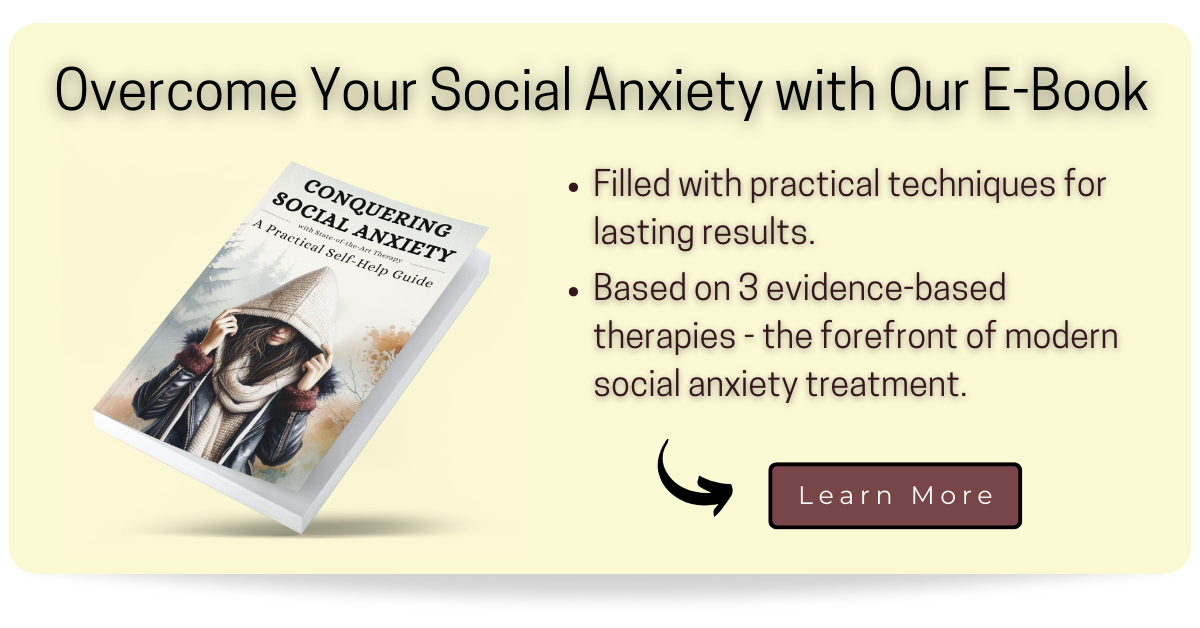
B. Efficacy of RIMAs in Social Anxiety Treatment
Clinical investigations into the impact of RIMAs on diverse aspects of social anxiety have illuminated their potential as a promising treatment avenue.
Both moclobemide and brofaromine, prominent RIMA agents, have exhibited efficacy in ameliorating social phobia symptoms and have displayed encouraging outcomes in addressing panic disorder as well, underscoring their potential as effective interventions for these anxiety-related conditions (Priest et al., 1995).

RIMAs, regarded as potentially safer alternatives to traditional MAOIs, offer a hopeful prospect in social phobia treatment, further expanding the therapeutic options (Schneier, 2001).
Comparison of RIMAs’ efficacy with that of non-reversible MAOIs in treating social phobia has highlighted a comparable effectiveness between these medications and placebo (Liebowitz et al., 1993).
Moclobemide, classified as a RIMA, has demonstrated substantial promise in treating social phobia, as evidenced by its marked superiority over placebo on specific primary outcome measures (Schneier et al., 1998).
Equally compelling, brofaromine‘s efficacy shines through in effectively mitigating social anxiety symptoms, as evidenced by its notable reduction when contrasted with the placebo group (Lott et al., 1997).

However, a comprehensive understanding necessitates acknowledgment of certain observed side effects, which we shall delve into shortly.
Please note that while research focus has been primarily on moclobemide and brofaromine, other RIMAs may also hold potential in the treatment of social anxiety.
The absence of mention of specific RIMAs beyond those discussed should not undermine the possibility of their effectiveness.
It’s also vital to appreciate that the response to RIMAs in managing social anxiety can vary among individuals.
Choosing the optimal treatment path demands a comprehensive assessment of the individual’s medical history, current condition, and treatment objectives.

C. Benefits and Considerations
Advantages of RIMAs in Managing Social Anxiety Symptoms
Rapid Onset of Action
RIMAs offer a relatively rapid onset of action, often quicker than that seen with traditional SSRIs and SNRIs.
While the exact timeline may vary from person to person, some individuals may begin to experience improvements in their social anxiety symptoms within the first one to two weeks of starting RIMA treatment.

This prompt response can be particularly advantageous for individuals who require swift relief to bolster their confidence and engagement in social interactions.
Potential for Fewer Sexual Side Effects
RIMAs may provide a notable advantage for individuals concerned about sexual side effects, a concern often associated with certain antidepressant medications, particularly SSRIs and SNRIs.
By targeting specific neurotransmitter systems, RIMAs may reduce the risk of sexual dysfunction, contributing to an improved overall treatment experience.
Reduced Risk of Serotonin Syndrome
Serotonin syndrome, a potentially serious condition arising from excessive serotonin levels, can result from interactions between certain medications.
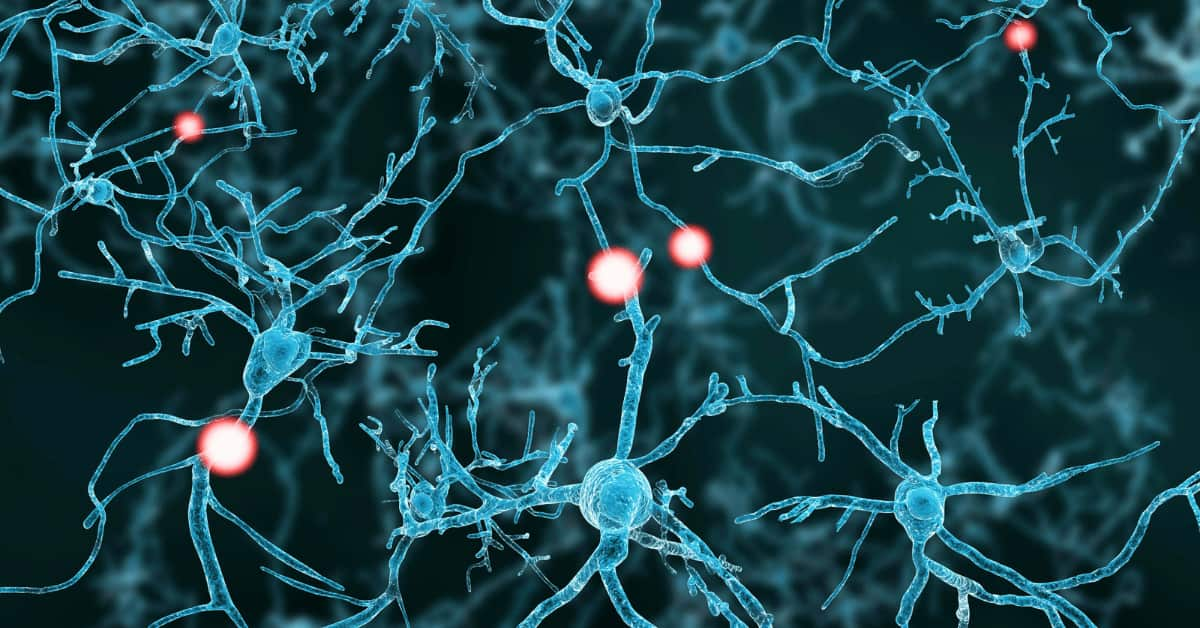
RIMAs’ distinctive mechanism of action, which encompasses modulation of serotonin, norepinephrine, and dopamine, may lead to a diminished risk of serotonin syndrome compared to medications primarily affecting serotonin levels.
Possible Side Effects and Precautions
Overall, the most frequently encountered side effects encompass dry mouth, nausea, diarrhea, constipation, drowsiness, insomnia, dizziness, and/or lightheadedness (Fiedorowicz & Swartz, 2004).
Furthermore, when using a patch application, there is a potential for a skin reaction at the site.
Dietary Restrictions and Interactions
While RIMAs offer potential benefits, it’s important to be aware of dietary restrictions.
Tyramine-containing foods, such as aged cheeses, certain meats, and fermented products, should be consumed in moderation or avoided, as they can interact with RIMAs and lead to elevated blood pressure, a dangerous phenomenon referred to as hypertensive crises (Sathyanarayana & Yeragani, 2009).

Your doctor will provide you with clear guidelines on managing your diet while on RIMA treatment, ensuring you navigate these potential interactions safely and effectively.
Adhering to these dietary guidelines is essential for maintaining a secure and successful treatment journey.
Drug Interactions and Contraindications
As with any medication, RIMAs can interact with other drugs, potentially affecting their efficacy or causing adverse effects (Fiedorowicz & Swartz, 2004).
It is essential to inform your healthcare provider about all medications, supplements, and herbal remedies you are taking to minimize the risk of harmful interactions.
Certain medical conditions or medications may also contraindicate the use of RIMAs, making a thorough medical assessment crucial before initiating treatment.

Monitoring for Potential Adverse Effects
Regular monitoring and communication with your healthcare provider are essential when using RIMAs.
While RIMAs generally have a favorable side effect profile, individuals should remain vigilant for any adverse effects and promptly report any unusual symptoms or changes in mood, behavior, or physical well-being.
Equally important is the need to communicate their RIMA usage to any healthcare professional they come across, including both medical and dental practitioners (Laban & Saadabadi, 2022).

As you consider integrating RIMAs into your social anxiety treatment plan, it’s vital to weigh the potential benefits against the associated considerations.
Remember that every individual’s response to medication is unique, and a collaborative approach with a qualified healthcare provider will help you make informed decisions aligned with your specific needs and goals.

D. Getting Started: Seeking Professional Guidance
The Importance of Consulting a Qualified Healthcare Provider
Embarking on a treatment journey for social anxiety requires careful consideration and expert guidance.
Consulting a qualified healthcare provider, such as a psychiatrist or a medical doctor with expertise in mental health, is a crucial first step.
These professionals possess the knowledge and experience to assess your individual needs, provide accurate information, and guide you toward the most suitable treatment options.

Steps Involved in the RIMA Treatment Process
(1) Initial Assessment: During your first consultation, your healthcare provider will conduct a thorough assessment of your medical history, current symptoms, and treatment preferences. This assessment helps determine whether RIMAs are a suitable option for your social anxiety.
(2) Informed Decision-Making: Based on the assessment, your healthcare provider will discuss the potential benefits and risks of RIMAs, taking into account your unique circumstances. They will provide you with essential information to make an informed decision about your treatment.
(3) Individualized Treatment Plan: If RIMAs are deemed appropriate, your healthcare provider will create an individualized treatment plan tailored to your needs. This plan may include details about dosage, frequency of appointments, and specific monitoring requirements.
(4) Regular Monitoring: Throughout your treatment journey, your healthcare provider will closely monitor your progress, making any necessary adjustments to ensure optimal outcomes. Open communication about your experiences and any changes in symptoms is essential for fine-tuning your treatment plan.

Addressing Concerns and Questions with a Healthcare Professional
When considering RIMAs for social anxiety treatment, it’s natural to have questions and concerns. Your psychiatrist or medical doctor is your primary resource for addressing these uncertainties. Don’t hesitate to ask about:
- The potential benefits and risks of RIMAs
- Expected timelines for symptom improvement
- Strategies for managing potential side effects
- Interactions with other medications or dietary restrictions
- Alternative treatment options and their pros and cons
Remember that open and honest communication with your healthcare provider fosters a collaborative relationship, ensuring that your treatment journey aligns with your preferences and goals.

Online Psychiatry Consultation: A Feasible Option for Social Anxiety
You can conveniently schedule an online appointment with a qualified psychiatrist, licensed in your state, through our following partner-link, which also offers a special discount code.
The psychiatrists from Talkspace can provide a comprehensive evaluation, offer a diagnosis if applicable, and prescribe medication, such as SNRIs, if deemed appropriate for your specific needs.
Your prescription will be sent to a local pharmacy of your choice. Every three months you’ll have a follow-up video appointment, and you can message your provider any time.
Prescription treatment with Talkspace costs you about $30/month if you are insured, and about $60-$100/month when you pay out-of-pocket. Remember, through our link you will get a special coupon code.
E. Lifestyle and Coping Strategies Alongside RIMA Treatment
Psychotherapy and Counseling
While RIMAs offer a pharmacological approach to managing social anxiety, combining medication with psychotherapy can yield synergistic benefits.
Cognitive Behavioral Therapy (CBT) and other evidence-based therapeutic modalities provide tools to address thought patterns, behaviors, and emotional responses associated with social anxiety.

Collaborating with a trained therapist can help you develop coping strategies, challenge negative beliefs, and build self-confidence in social situations.
To read our introductory guide to CBT for social anxiety, you can simply click here.
Self-Help Techniques
In addition to professional therapy, integrating self-help techniques can enhance your journey toward managing social anxiety.
Techniques such as deep breathing, progressive muscle relaxation, and exposure exercises can be valuable tools in reducing anxiety levels.
For a comprehensive guide including 20 self-help techniques, refer to our dedicated article on the subject by clicking here.
Mindfulness and Relaxation Techniques
Mindfulness practices, such as meditation and mindfulness-based stress reduction, can complement RIMA treatment by fostering emotional regulation and reducing stress.
Engaging in regular mindfulness exercises enhances self-awareness, allowing you to observe your thoughts and feelings without judgment and respond to social situations more mindfully.
You can click here to read our introductory guide to mindfulness meditation for social anxiety.

We also highly recommend delving into our most extensive resource on social anxiety treatment, presented in our in-depth article that outlines the four pillars of effective management.
This guide not only offers valuable insights but also provides practical tools and tips to aid you in your journey. To access this article, simply click here.
F. Conclusion
In our journey through the realm of social anxiety treatment, we’ve explored the unique potential of Reversible Inhibitors of Monoamine Oxidase A, also called RIMAs, as a lesser-known yet useful option.
By targeting neurotransmitter systems and offering advantages such as rapid onset of action and potentially fewer sexual side effects, RIMAs present a distinct approach to managing the challenges posed by social anxiety.
Taking proactive steps to manage social anxiety can be transformative for your overall well-being and quality of life.

Embracing a holistic approach that combines RIMA treatment with psychotherapy, self-help techniques, and mindfulness practices empowers you to navigate social situations with increased confidence and resilience.
Collaborating with your psychiatrist, other medical doctor, and/or therapist ensures that your treatment plan aligns with your unique needs, preferences, and circumstances.
Regular communication, open dialogue, and a willingness to address any concerns or questions will pave the way for a well-informed and successful treatment experience.
Take Action Today for a better Tomorrow
Remember the online psychiatry service we recommended earlier? They also offer online therapy for social anxiety. We recommend you give it a shot and become proactive today.

You have the option to undergo a comprehensive online assessment conducted by a qualified psychiatrist, who can diagnose and prescribe medication if deemed suitable.
Alternatively, you can explore online therapy tailored to address your social anxiety.
Of course, you also have the flexibility to choose a combination of both approaches.
By utilizing our partner link to sign up, you’ll enjoy an exclusive $80 discount. To begin your journey today, simply click the button below.
Furthermore, for a comprehensive overview of all medication options available for social anxiety, we invite you to read our dedicated article by clicking here. It will provide you with valuable insights to make informed decisions about your treatment journey.
And, if you’re curious about natural alternatives to medication with fewer side effects, we highly recommend to explore our article on CBD for social anxiety by clicking here. It outlines recent promising research findings and a specific product recommendation for people with social anxiety.
Participate in a Research Study!
If you are affected by social anxiety, you can help researchers and clinicians better understand the condition and improve treatment efficacy by participating in a research study.
To take part, you can click here to open a short, quick survey in a new browser window, or simply fill out the form provided below. Thank you for your participation!
de Vries, Y. A., de Jonge, P., van den Heuvel, E., Turner, E. H., & Roest, A. M. (2016). Influence of baseline severity on antidepressant efficacy for anxiety disorders: meta-analysis and meta-regression. The British journal of psychiatry : the journal of mental science, 208(6), 515–521. https://doi.org/10.1192/bjp.bp.115.173450
Fiedorowicz, J. G., & Swartz, K. L. (2004). The role of monoamine oxidase inhibitors in current psychiatric practice. Journal of psychiatric practice, 10(4), 239–248. https://doi.org/10.1097/00131746-200407000-00005
Fowler, J. S., Logan, J., Azzaro, A. J., Fielding, R. M., Zhu, W., Poshusta, A. K., Burch, D., Brand, B., Free, J., Asgharnejad, M., Wang, G. J., Telang, F., Hubbard, B., Jayne, M., King, P., Carter, P., Carter, S., Xu, Y., Shea, C., Muench, L., … Apelskog-Torres, K. (2010). Reversible inhibitors of monoamine oxidase-A (RIMAs): robust, reversible inhibition of human brain MAO-A by CX157. Neuropsychopharmacology : official publication of the American College of Neuropsychopharmacology, 35(3), 623–631. https://doi.org/10.1038/npp.2009.167
Glover, V. (1997). Reversible Inhibitors of Monoamine Oxidase A (RIMAs). In: Skolnick, P. (eds) Antidepressants. Contemporary Neuroscience. Humana Press, Totowa, NJ. https://doi.org/10.1007/978-1-59259-474-0_4
Laban, T. S., & Saadabadi, A. (2022, July 19). Monoamine Oxidase Inhibitors (MAOI). In StatPearls [Internet]. Treasure Island (FL): StatPearls Publishing. Retrieved from https://www.ncbi.nlm.nih.gov/books/NBK539848/
Liebowitz, M. R., Schneier, F., Gitow, A., & Feerick, J. (1993). Reversible monoamine oxidase-A inhibitors in social phobia. Clinical neuropharmacology, 16 Suppl 2, S83–S88.
Lott, M., Greist, J. H., Jefferson, J. W., Kobak, K. A., Katzelnick, D. J., Katz, R. J., & Schaettle, S. C. (1997). Brofaromine for social phobia: a multicenter, placebo-controlled, double-blind study. Journal of clinical psychopharmacology, 17(4), 255–260. https://doi.org/10.1097/00004714-199708000-00003
Priest, R. G., Gimbrett, R., Roberts, M., & Steinert, J. (1995). Reversible and selective inhibitors of monoamine oxidase A in mental and other disorders. Acta psychiatrica Scandinavica. Supplementum, 386, 40–43. https://doi.org/10.1111/j.1600-0447.1995.tb05923.x
Sathyanarayana Rao, T. S., & Yeragani, V. K. (2009). Hypertensive crisis and cheese. Indian journal of psychiatry, 51(1), 65–66. https://doi.org/10.4103/0019-5545.44910
Schneier F. R. (2001). Treatment of social phobia with antidepressants. The Journal of clinical psychiatry, 62 Suppl 1, 43–49.
Schneier, F. R., Goetz, D., Campeas, R., Fallon, B., Marshall, R., & Liebowitz, M. R. (1998). Placebo-controlled trial of moclobemide in social phobia. The British journal of psychiatry : the journal of mental science, 172, 70–77. https://doi.org/10.1192/bjp.172.1.70

About the Author: Martin Stork
Martin is a professional psychologist with a background in physical therapy. He has organized and led various support groups for people with social anxiety in Washington, DC and Buenos Aires, Argentina. He is the founder of Conquer Social Anxiety Ltd, where he operates as a writer, therapist and director. You can click here to find out more about Martin.








